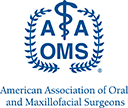
The Hidden Culprit: Dental Abscess and Abscessed Tooth
Are you grappling with persistent discomfort in your jaw, cheek, or ear, impacting your daily life? Often, individuals experiencing orofacial or TMJ pain may not realize that the source of their discomfort lies within their jaw or a specific tooth. This article explores the role of oral surgery in alleviating facial pain and sheds light on various conditions that may be contributing to your discomfort.
Dental Abscess/Abscessed Tooth: Unmasking the Underlying Infection
One common cause of facial pain is a dental abscess or an abscessed tooth. When a tooth develops a cavity or crack, the exposed nerve tissues become vulnerable to bacterial infection. This infection can lead to swelling and pus formation, with the pain sometimes radiating to the jaw or ear. Severe cases may present with facial swelling and fever. Root canal therapy or tooth extraction is often recommended to eliminate the infected tissue and prevent the spread of infection to neighboring teeth.
Temporomandibular Joint Disorder (TMD/TMJD): Decoding Jaw Pain
The temporomandibular joint (TMJ), a crucial hinge-like joint on either side of the lower jaw, facilitates essential movements for chewing, speaking, and swallowing. Dysfunction or overuse of this joint and its surrounding tissues can result in severe pain radiating to the jaw, face, neck, shoulders, and back. More than 10 million Americans suffer from TMJ disorders, often caused by teeth grinding (bruxism) or jaw misalignment due to injury. Non-surgical options like splints or physical therapy are initial recommendations, but if ineffective, surgery may be considered to correct Temporomandibular Joint Disorder.
Dry Socket After a Dental Extraction: A Painful Aftermath
Following a dental extraction, a blood clot typically forms in the socket to protect the underlying bone tissues. However, improper clot formation or dislodgement can lead to a painful infection known as a “dry socket.” Symptoms mimic those of an abscessed tooth, including swelling, fever, and severe pain. Dentists or oral surgeons prescribe medications to alleviate discomfort, clean the socket, and insert a medicated dressing to facilitate healing.
Embracing Relief: You Don’t Have to Endure Pain
Living with orofacial discomfort is challenging, but relief is within reach. Oral surgeons, equipped with specialized training, can diagnose and treat conditions causing pain in the face, mouth, teeth, and jaws. If you’re experiencing severe orofacial discomfort, take the first step toward a pain-free life by contacting an oral surgeon for practical solutions that promise lasting relief. Don’t let pain dictate your life—reclaim your comfort today.







